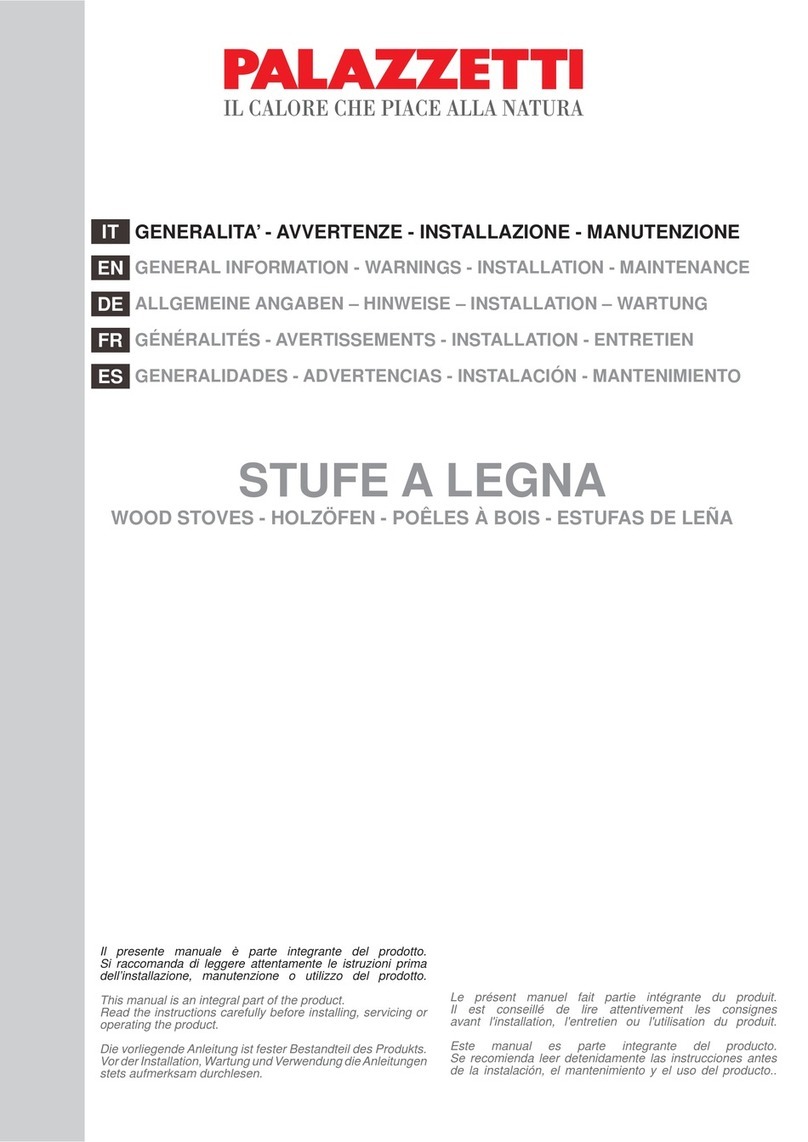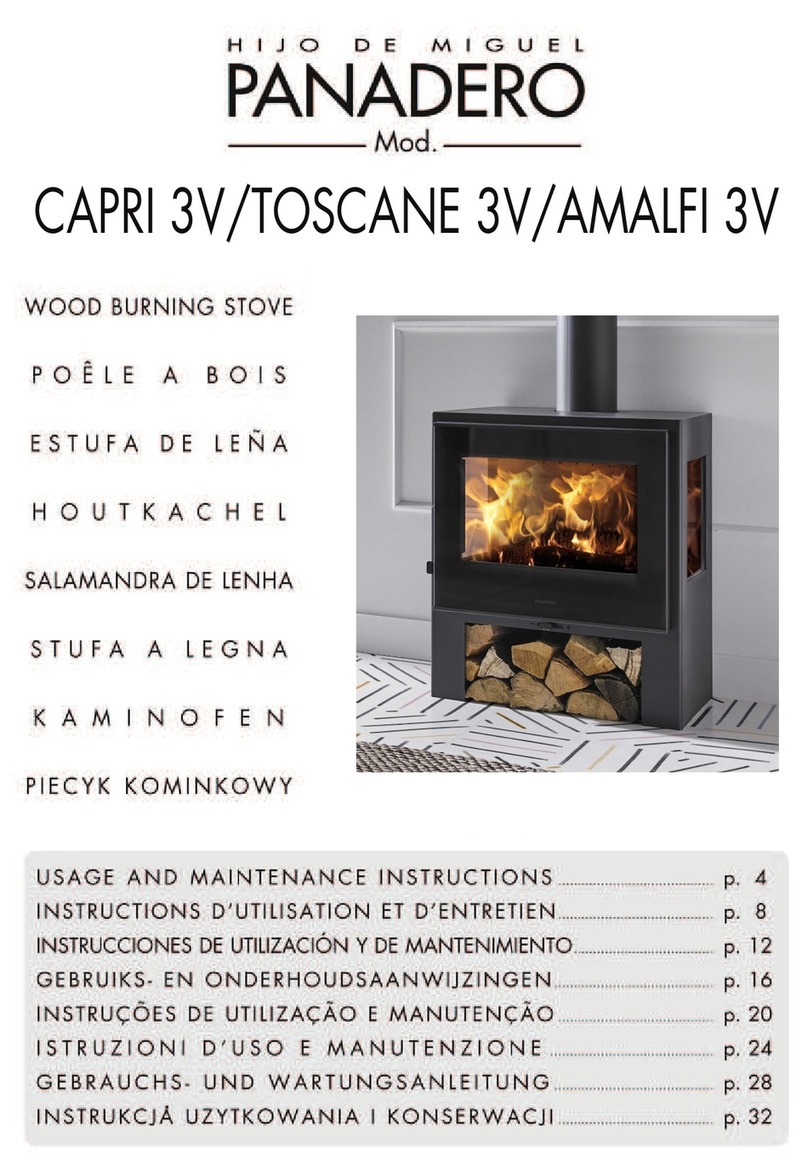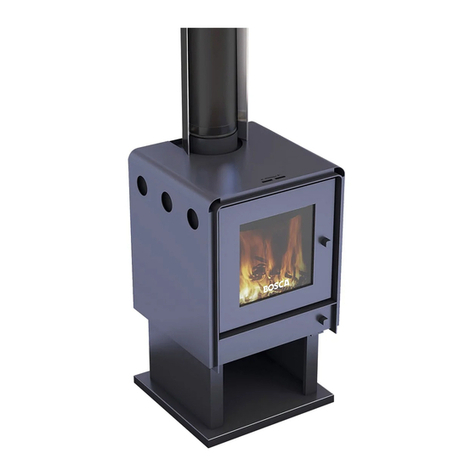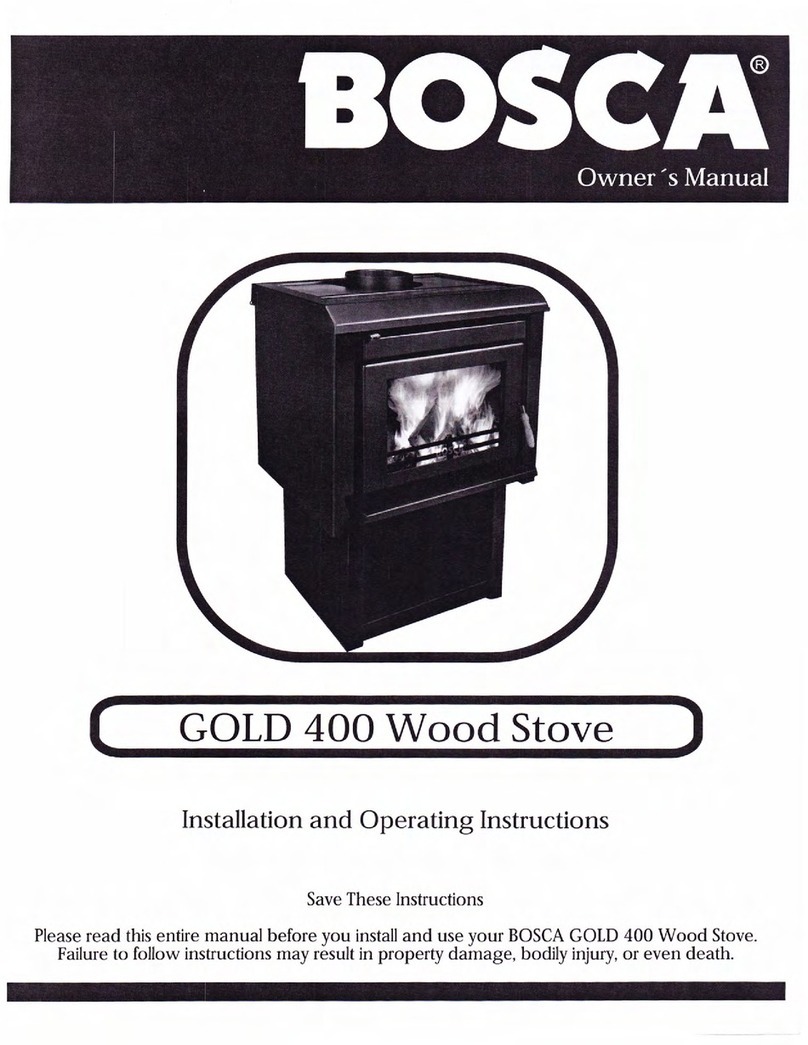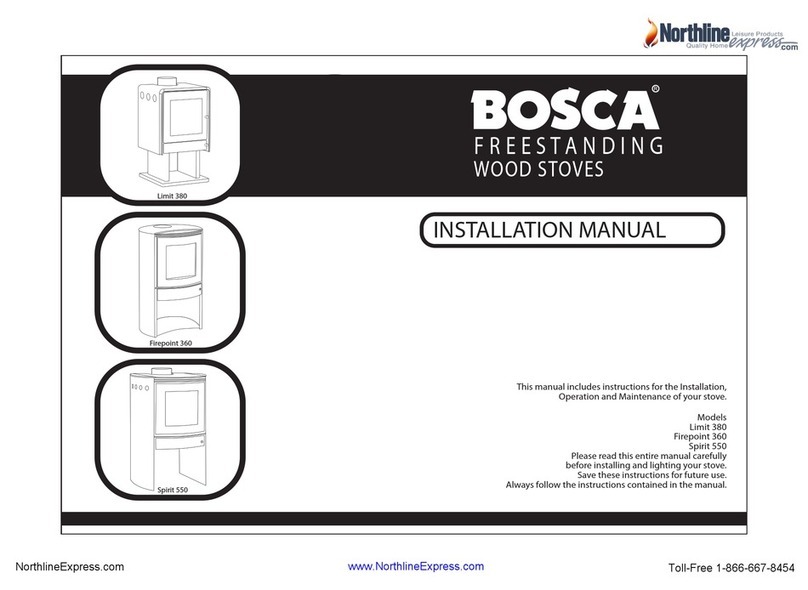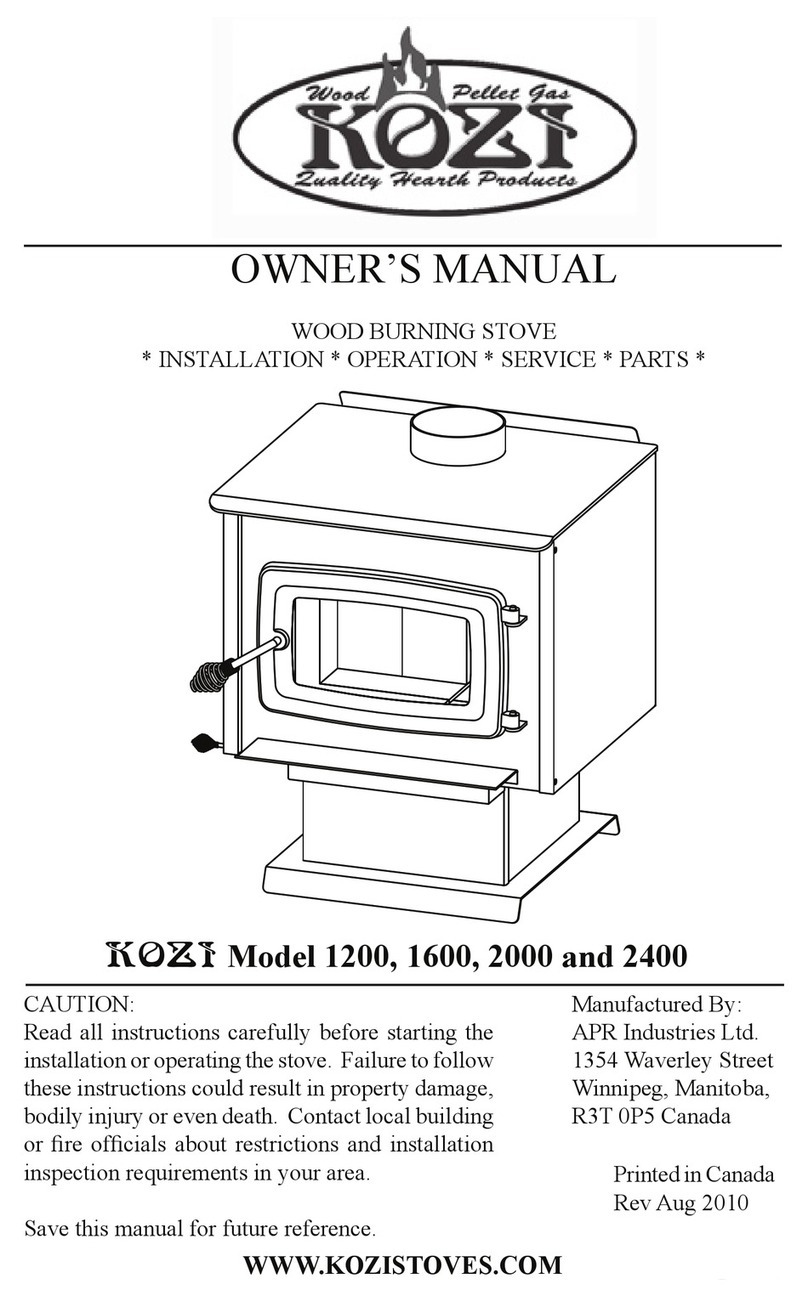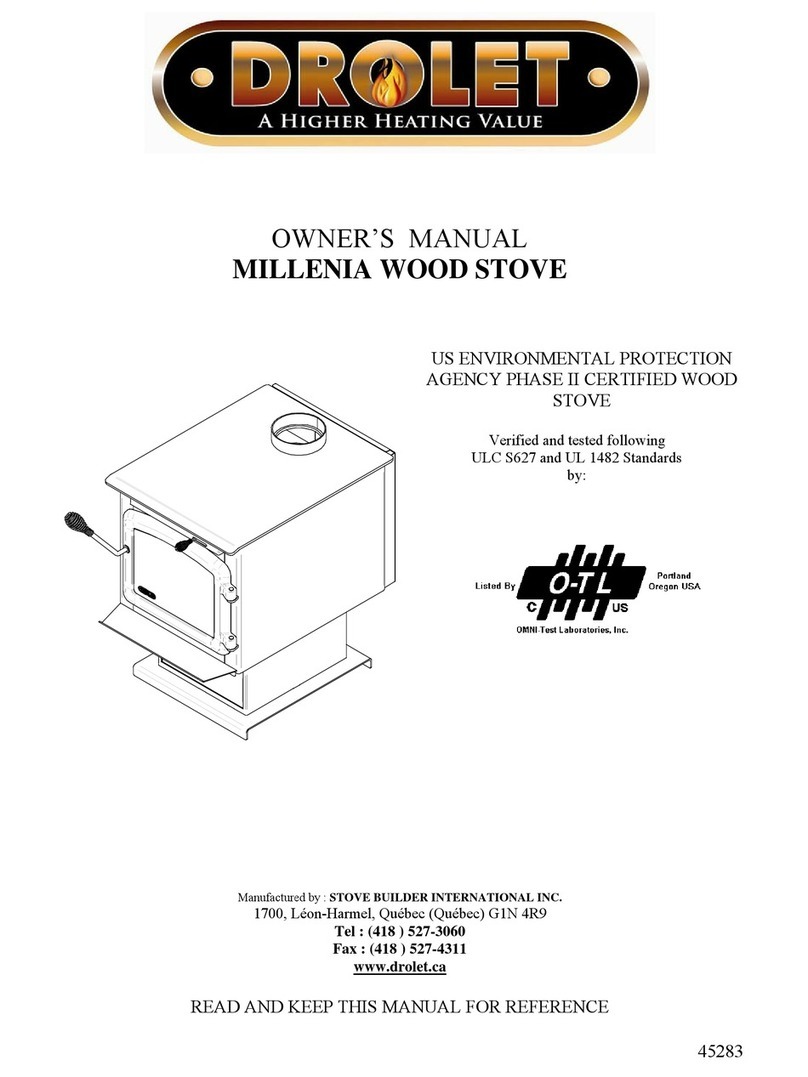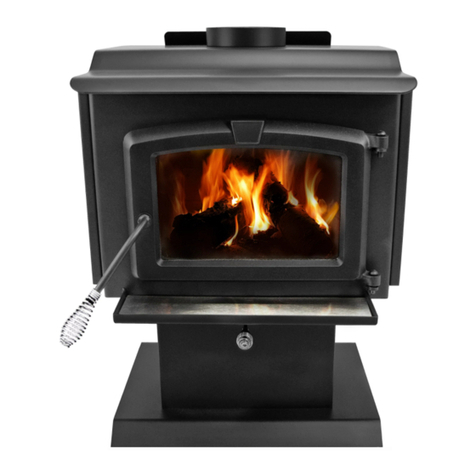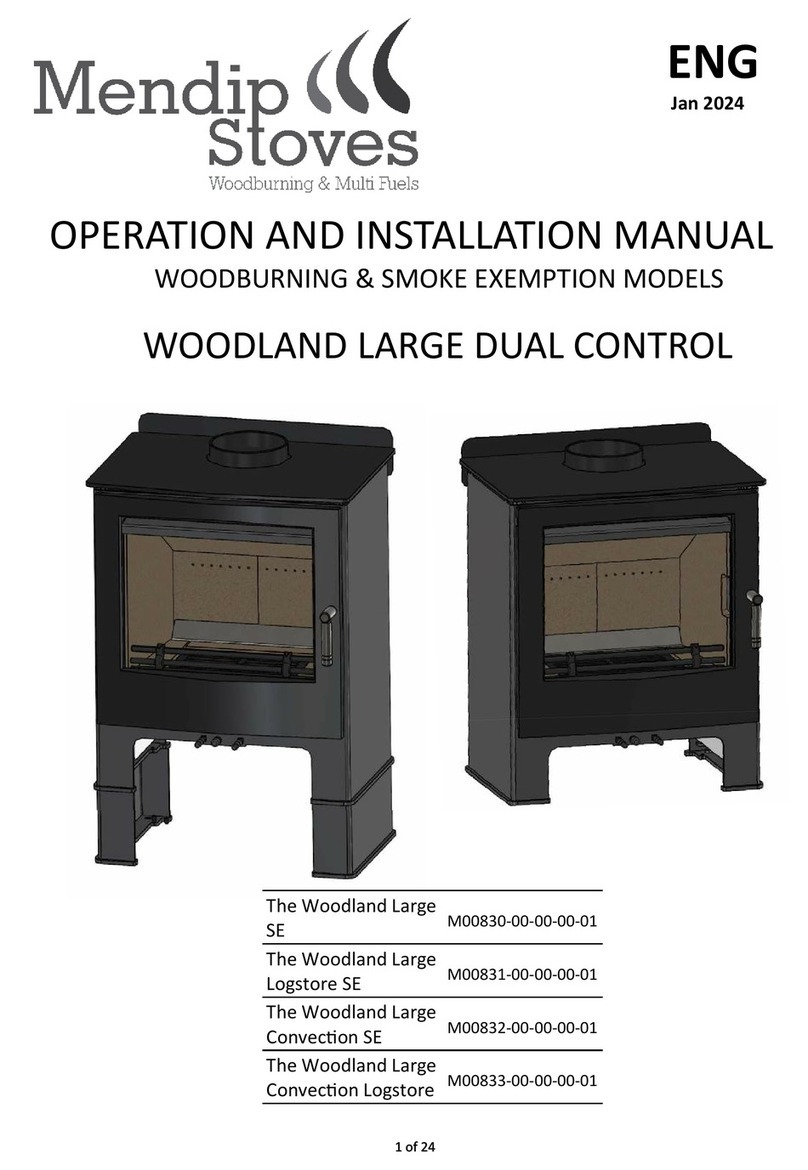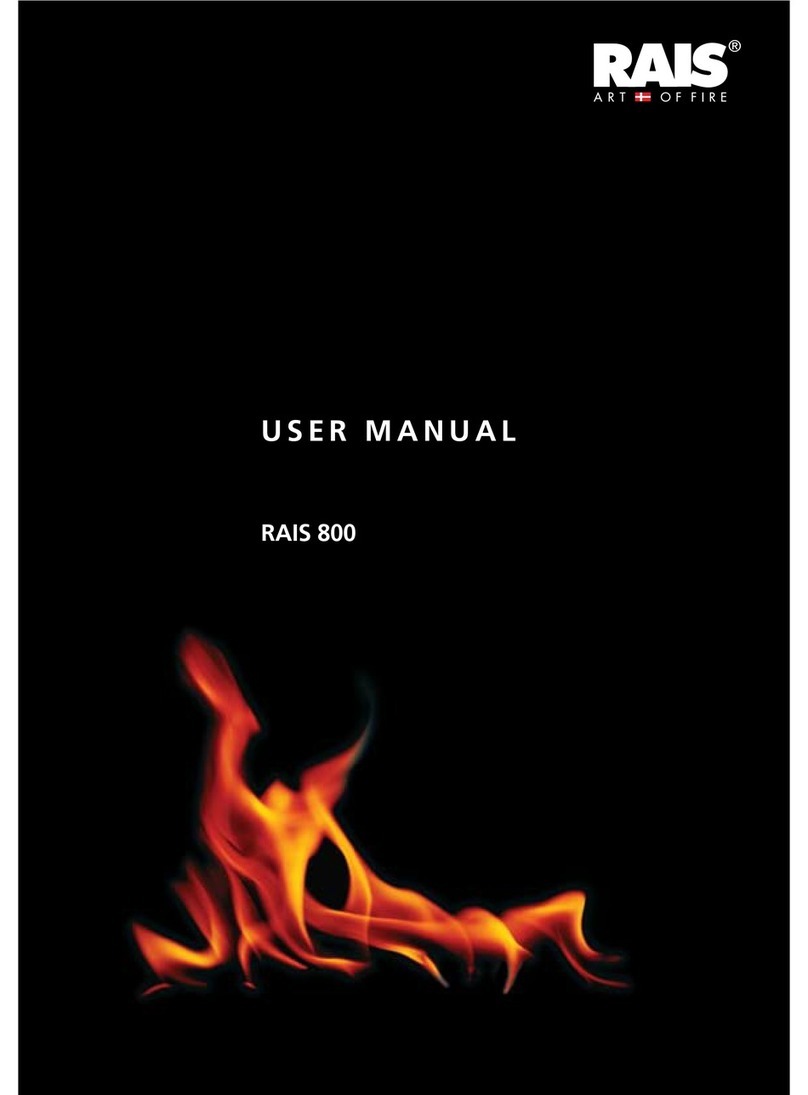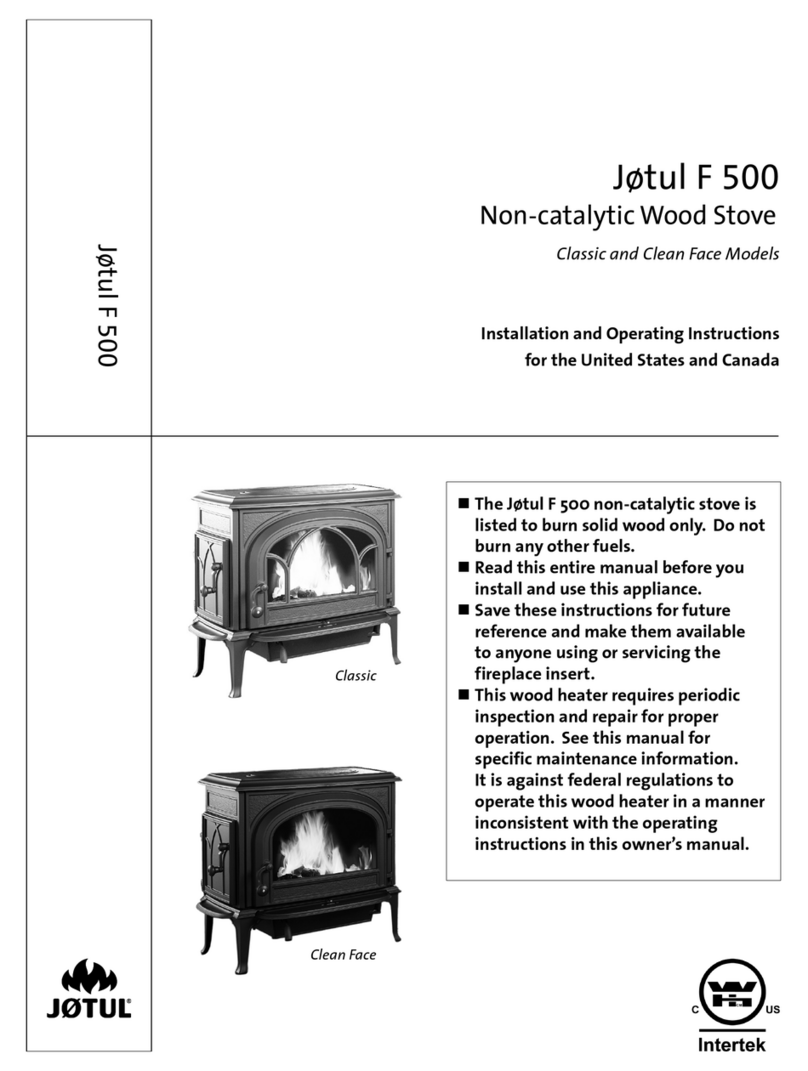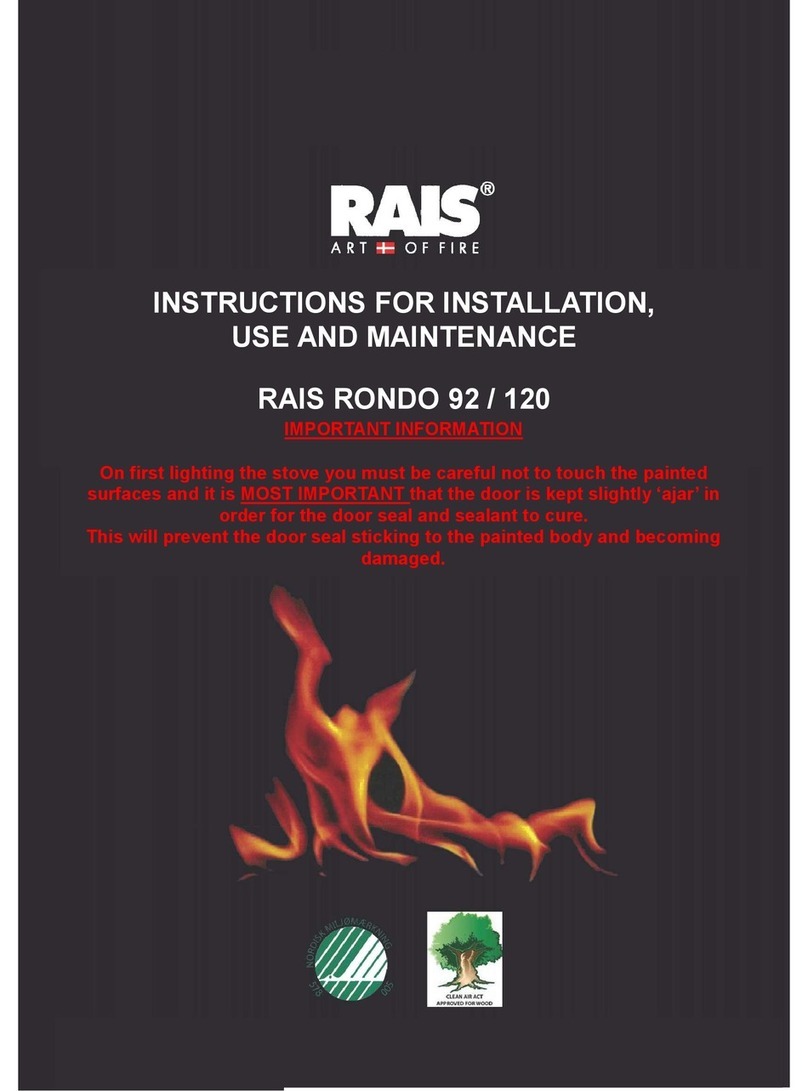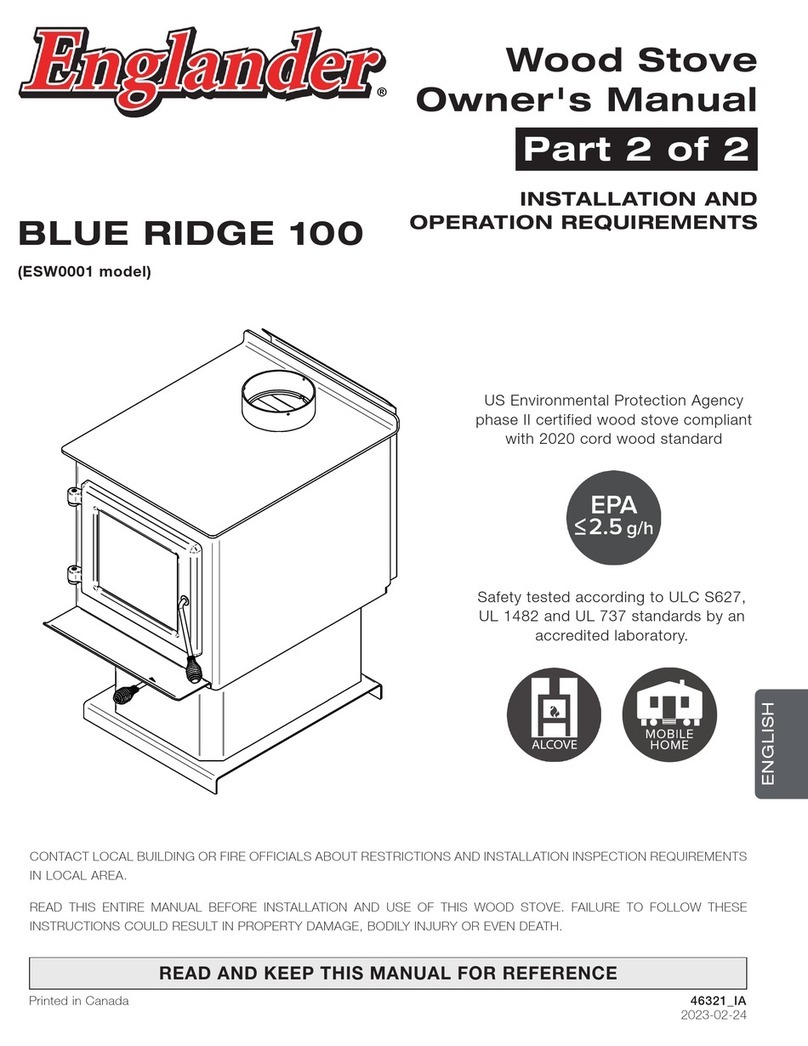Minimum chimenev clearance lo brick
and combustibles Zin. (50.8 mm)
rlll
F-r--r---1
l}#
tffil
_iF+..,r_.+l
lffi G
o
.E
Q
Minimum 12 in. {304.8 mm)
to combustibles
Minimum clearance
9 in. (228.6 mm)
Chimnev
Conneclor
o
E
E
Use chimnev
mlrs.-parts trj
attach connector
securely
$asonry \ \ r
UnlmneY Sheet steel
suppofts
Minimum chimenev clearance t'o
sheet steel suo'Dorts and
combustibles 2 in'. (50.8 mm)
Two air channels
each lin. {25.4mm}
Chimnev
connecl6r
Sheet steel
supports
Chimnev
Chimnev
connecl6r
- Air Soace
2 in. (5d.8 mm)
Minimum clearance
1 in. (25.4 mm)
Masonrv
Chimney
Combustible Wall Chimney Connector Pass - Throughs
Method A.12" (304.8 mm) Clearance to Combustible Wall
Member: Using a minimum thickness 3.5" (89 mm) brick and
a 5/8" (15.9 mm) minimum wall thickness clay liner, construct
a wall passthrough. The cla.y liner must confor;n to ASTM C315
(Standard Specification for Clay Fire Linings) or its equivalent.
Keep a minimum of 12" (304.8 mm) of brick masonry between
the clay liner and wall combustibles. The clay liner shallrun
from the brick masonry outer surface to the inner surface of the
chimney flue liner buinot past the inner surface. Firmly grout
or cement the clay liner in place to the chimney flue liner.
Method B. 9" (228.6 mm) Clearance to Combustible Wall
Member: Using a 6" (152.4 mm) inside diameter,listed, factory-
built Solid-Pak chimney section with insulation of l" (25.4 mm)
or more, build a wallpass-through with a minimum 9" (228.6
mm) air space between the outer wall of the chimney length
and wall combustibles. Use sheet metal supports fastened
securely to wall surfaces on all sides, to maintain the 9" (228.6
mm) air space. When fastening supports to chimney length,
do not penetrate the chimney liner (the inside wall of the Solid-
Pak chimney). The inner end of the Solid Pak chimney section
shall be flush with the inside of the masonry chimney flue, and
sealed with a non-water soluble refractory cement. Use this
cement to also seal to the brick masonry penetration.
Method C.6" (152.4 mm) Clearance to Combustible Wall
Member: Starting with a minimum 24 gage (.024" [.61 mm])
6" (152.4 mm) metalchimney connector, and a minimum24
gage ventilated wall thimble which has two air channels of 1"
(25.4 mm) each, construct a wallpass-through. There shall be
a minimum 6" (152.4) mm separation area containing fiberglass
insulation, from the outer surface of the wall thimble to wall
combustibles. Support the wall thimble, and cover its opening
with a Z4-gage minimum sheet metalsupport. Maintain the 6"
(f 52.4 mm) space. There should also be a support sized to fit
and hold the metal chimney connector. See that the supports
are fastened securely to wall surfaces on all sides. Make sure
fasteners used to secure the metal chimney connector do not
penetrate chimney flue liner.
Method D. 2" (50.8 mm) Clearance to Combustible Wall
Member: Start with a solid-pak listed factory built chimney section
at least I2" (3O4 mm) long, with insulation of 1" (25.4 mm) or
more, and an inside diameter of 8" (2 inches [51 mm] larger
than the 6" 1152.4 mml chimney connector). Use this as a pass-
through for a minimum Z|-gage single wall steel chimney
connector. Keep solid-pak section concentric with and spaced
l" (25.4 mm) offthe chimney connector by way of sheet metal
support plates at both ends of chimney section. Cover opening
with and support chimney section on both sides with 24 gage
minimum sheet metal supports. See that the supports are fastened
securely to wall surfaces on all sides. Make sure fasteners used
to secure chimney flue liner.
NOTES:
L Connectors to a masonry chimney, excepting method B, shall extend in one conlinuous section through the wall pass,through system and the chimney wall, to but not past
the inner flue liner face.
2. A chimney connector shall not pass through an attic or roof space, closet or similar concealed space, or a floor, or ceiling.



